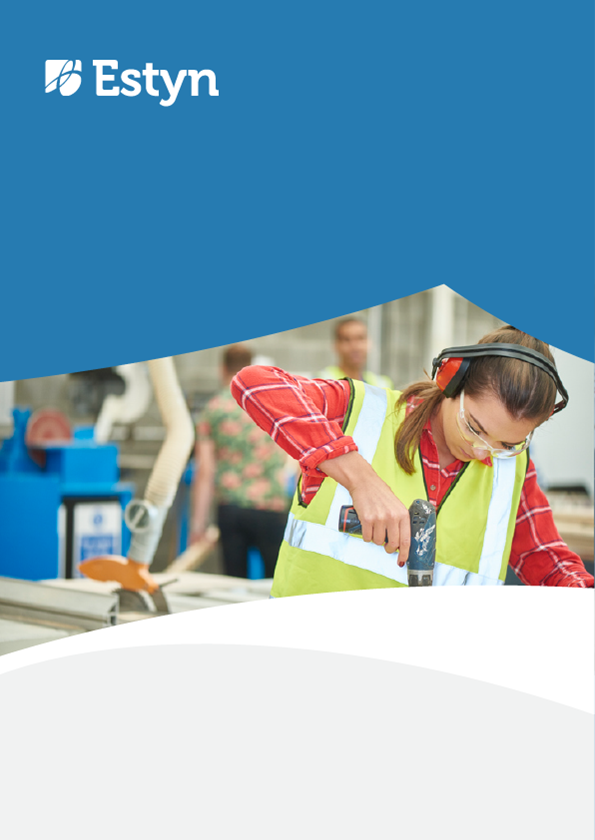Inspection Guidance Type: What and how we inspect




This handbook sets out our approach to inspecting further education colleges from 2024. It explains how we inspect. The term ‘provider’ is used throughout this document to refer to the college or any group of colleges that operate under a single group structure. The guidance is essential reading for reporting inspectors and all other members of the inspection team. It may also be useful for providers to support their understanding of the inspection mind-set and methodologies.
The guidance should be read alongside ‘What we inspect’ guidance in further education, which outlines the inspection framework. Providers can use this guidance to see how inspections work and to help them in strengthening their own self-evaluation and improvement processes.
Where the inspection identifies practice worth sharing, inspectors will include a spotlight on this practice as part of the inspections report. Where the inspection identifies important concerns in relation to standards, quality of education and training or leadership and management, we will arrange follow-up activity to support improvement. Guidance on follow-up activity is presented at the end of this document.

This handbook sets out what inspectors need to consider when evaluating the three inspection areas in Further Education (FE). It explains ‘What we inspect’. The guidance is essential reading for reporting inspectors and all other members of the inspection team, including the nominee. It may also be helpful for anyone who wants to better understand our approach to inspection. There is a separate handbook entitled ‘How we inspect’ that explains the inspection process and methodology.
The three inspection areas are set out below:
IA1 – Teaching and learning
IA2 – Well-being, care, support and guidance
IA3 – Leading and improving

This handbook sets out our approach to inspecting adult learning in the community partnerships from 2024. It explains how we inspect. The guidance is essential reading for reporting inspectors and all other members of the inspection team. It may also be useful for partnerships to support their understanding of the inspection mind-set and methodologies.
The guidance should be read alongside ‘What we inspect’ guidance for adult learning in the community partnerships, which outlines the inspection framework. Partnerships can use this guidance to see how inspections work and to help them in strengthening their own self-evaluation and improvement processes.
Where the inspection identifies practice worth sharing, inspectors will include a spotlight on this practice as part of the inspection report. Where the inspection identifies important concerns in relation to standards, quality of education and training or leadership and management, we will arrange follow-up activity to support improvement. Guidance on follow-up activity is presented at the end of this document.

This handbook sets out what inspectors need to consider when evaluating the three inspection areas in adult learning in the community partnerships. It explains ‘What we inspect’. The guidance is essential reading for reporting inspectors and all other members of the inspection team, including the nominee. It may also be useful for providers to support their understanding of the inspection guidance. There is a separate handbook that explains the inspection process and methodology, ‘How we inspect in adult learning in the community partnerships’.
The three inspection areas are set out below:
IA1 Teaching and learning
IA2 Well-being, care, support and guidance
IA3 Leading and improving

This guidance sets out the way we will conduct inspections of local government education services (LGES) from September 2024. Please read this in conjunction with our guidance on ‘ What We Inspect in LGES inspections.
Local government education services cover statutory education functions of the local authority for children and young people up to age 25. This includes education services provided on behalf of a local authority by:
These other providers or shared services may be inspected separately from a local authority, and are referred to in this guidance as ‘other education services providers’. In such inspections, inspectors would only apply the sections of the framework that cover the relevant education services.
The guidance sets out how we will follow-up with local authorities, commissioned services or partnership services causing significant concern. Local authorities and their partners can use this guidance to understand how we will conduct inspections. It may also help them self-evaluate and plan for improvement.

This handbook sets out what we inspect in local government education services (LGES) inspections. It should be read in conjunction with a separate handbook ‘How we inspect’ that explains the inspection process and methodology.
The guidance is essential reading for reporting inspectors and all other members of the inspection team, including the nominee. It will also be useful for providers to support their understanding of the inspection guidance.
Local government education services cover statutory education functions of the local authority for children and young people up to age 25. This includes education services provided on behalf of a local authority by:
These other providers may be inspected separately from a local authority, and are referred to in this guidance as ‘other education services providers’. In such inspections, inspectors would only apply the sections of the framework that cover the relevant education services. Please read are ‘How we inspect’ guidance for further information.
There are two inspection areas in LGES inspections as set out below.
Inspection areas
Inspection Area 1. Education services and their impact
1.1 School improvement services
1.2 Support for vulnerable learners
1.3 Other support services
Inspection area 2: Leading and improving
2.1 Quality and effectiveness of leaders and managers
2.2 Self-evaluation and improvement planning
2.3 Safeguarding arrangements
2.4 Use of resources
Inspections of local government education services include an inspection of any of the following:
We will be carrying out stand-alone inspections of local authority youth work and Welsh immersion education from September 2024. In the case of the statutory youth service, the inspections will be carried out four weeks prior to the LGES inspections, so that the findings inform relevant aspects of the LA’s LGES inspection.

This handbook sets out what inspectors need to consider when evaluating the three inspection areas in Independent Specialist Colleges (ISC). These are the providers registered as independent special post-16 institutions with Welsh Government. It explains ‘What we inspect’. The guidance is essential reading for reporting inspectors and all other members of the inspection team, including the nominee. It may also be helpful for anyone who wants to better understand our approach to inspection. There is a separate handbook entitled ‘How we inspect’ that explains the inspection process and methodology.
The three inspection areas are set out below:
IA1 –Teaching and learning
IA2 – Well-being, care, support and guidance
IA3 – Leading and improving

This handbook sets out our approach to inspecting independent specialist colleges. These are the providers registered as independent special post-16 institutions with Welsh Government. It explains how we inspect. The guidance is essential reading for reporting inspectors and all other members of the inspection team. It may also be useful for providers to support their understanding of the inspection mind-set and methodologies.
The guidance should be read alongside ‘What we inspect’ guidance in independent specialist colleges, which outlines the inspection framework. Providers can use this guidance to see how inspections work and to help them in strengthening their own self-evaluation and improvement processes.
Where the inspection identifies practice worth sharing, inspectors will include a spotlight on this practice as part of the inspection report. Where the inspection identifies important concerns in relation to learning and teaching, well-being, support and guidance and leading and improving, we will arrange follow-up activity to support improvement. Guidance on follow up activity is available on p 17 of this handbook.